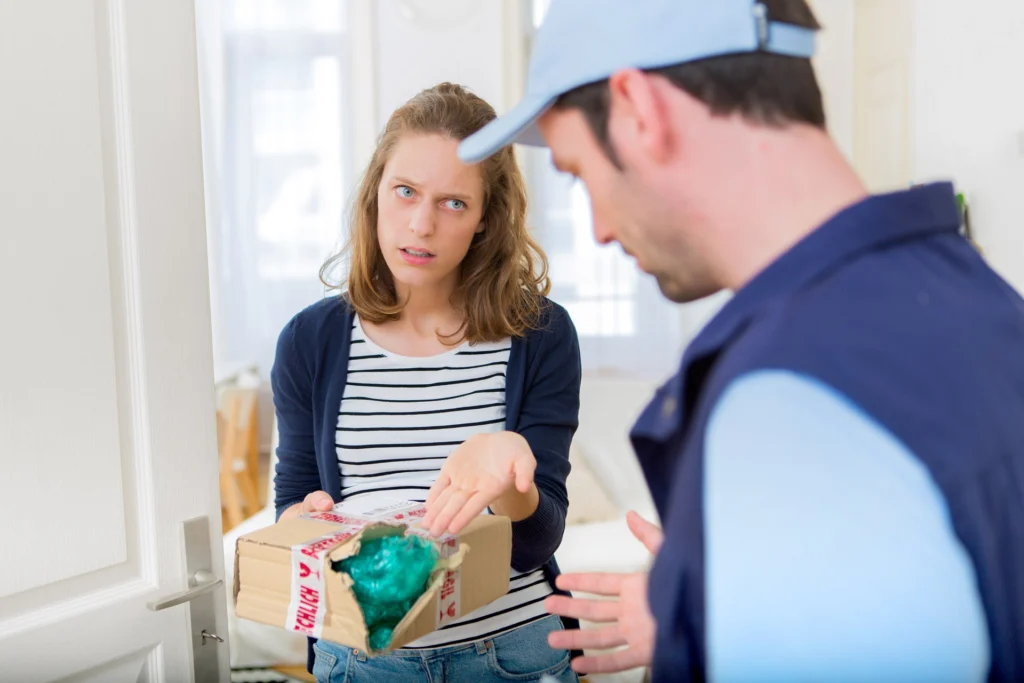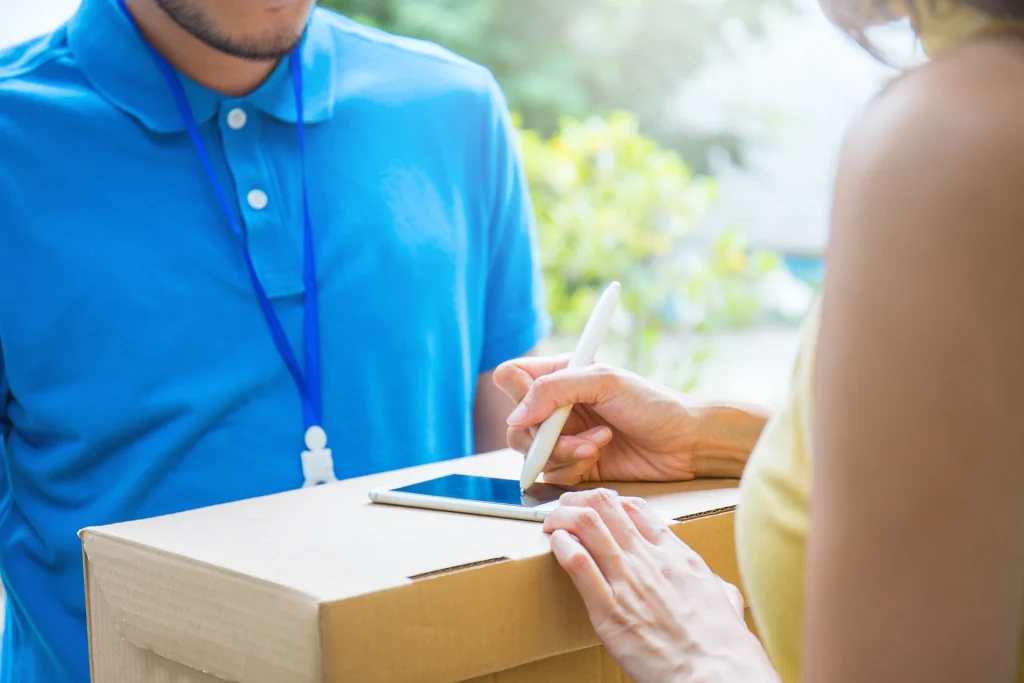32 Supply Chain Experts, Delivery Professionals & eCommerce Retailers Reveal How Customer Expectations in Last-Mile Delivery Have Evolved Over the Last 10 Years

Wise Systems

Meeting customer expectations in last-mile delivery is paramount in today’s competitive landscape, both for companies handling last-mile delivery services and e-commerce retailers that partner with third-party delivery providers.
eCommerce giants like Amazon, Walmart, and Target typically set the stage for customer expectations in last-mile delivery by introducing options such as free two-day delivery. These options start as innovative, nice-to-have perks, but as more companies follow suit to remain competitive, they quickly become the expected norm.
To keep pace and maintain a competitive edge, companies must first develop an understanding of what customers expect today when it comes to last-mile delivery. We reached out to a panel of industry experts to gain some insight into how customer expectations in last-mile delivery have evolved over the last 10 years.
In this article:
- What Are Customers’ Expectations in Last-Mile Delivery?
- Meet Our Panel of Supply Chain Experts, Delivery Professionals & eCommerce Retailers
- How Customer Expectations in Last-Mile Delivery Have Evolved Over the Last 10 Years
- Frequently Asked Questions
What Are Customers’ Expectations in Last-Mile Delivery?

Customer expectations refer to the set of beliefs or standards that customers have regarding the value, benefits, and quality of products, services, and experiences a business provides. These expectations are formed based on past experiences, word-of-mouth, marketing messages, and comparisons with competitors.
In last-mile delivery, businesses are providing a service to customers. While the actual delivery may be handled by a third-party logistics provider or local delivery service, this experience still has a significant impact on the customer’s perception of the brand or retailer they purchased from.
Customer expectations in last-mile delivery span a multitude of factors, such as:
- Delivery speed
- Accurate, undamaged orders
- Flexible delivery options
- Convenient delivery times
- Real-time tracking
- Customer communication
- Accurate delivery time estimates
- Low-cost or free delivery
- Eco-friendly delivery options
Many of these expectations have heightened over the past few years, and some have only recently emerged due to technology advancements that now make them possible.
Businesses are now tasked with not just keeping pace but striving to offer value-added services that can distinguish their brand in the highly competitive modern landscape. This might involve leveraging data analytics for route optimization, investing in automation and robotics for warehouse and sorting efficiencies, or exploring sustainable delivery options that appeal to the environmentally conscious consumer.
The goal is to craft a delivery experience that not only meets the basic expectations of speed and reliability but also enhances the overall customer experience through personalized service and exceptional attention to detail.
Schedule a demo today to discover how the Wise Systems delivery automation platform can help your organization enhance the customer experience.
To learn more about the evolution of customer expectations in last-mile delivery over the past decade, we reached out to a panel of supply chain experts, delivery professionals, and e-commerce retailers and asked them to answer this question:
“How have customer expectations in last-mile delivery changed and evolved over the last 10 years?”
Meet Our Panel of Supply Chain Experts, Delivery Professionals & eCommerce Retailers
How Customer Expectations in Last-Mile Delivery Have Evolved Over the Last 10 Years
Keep reading to learn how customer expectations in last-mile delivery have evolved over the past decade.
 Billy Parker
Billy Parker
Billy Parker is the Director of GiftDelivery.co.uk.
“Customer expectations in last-mile delivery have significantly changed over the last 10 years…”
With the rise of e-commerce and the increasing demand for fast and convenient delivery, customers now expect their packages to arrive quickly and accurately. This has put pressure on supply chain and logistics experts, as well as last-mile delivery professionals, to constantly innovate and improve their processes to meet these expectations.
One major change in customer expectations is the demand for real-time tracking and updates on their deliveries. This has led to the development of advanced tracking technologies and the use of data analytics to optimize delivery routes and improve efficiency. Additionally, customers now expect more flexibility and options when it comes to delivery, such as same-day or next-day delivery, as well as the ability to choose a specific delivery time slot.
 Aashish Rrastogi
Aashish Rrastogi
Aashish Rrastogi is the CEO of SportsUncle.com.
“Customer expectations have evolved in several ways…”
Low-cost or Free Shipping:
Shipping that is free or inexpensive has become nearly standard, thanks to the large number of e-commerce companies that provide it. Decision-making and client loyalty have been impacted by this.
Environmental Issues:
Environmental sustainability is becoming more widely recognized, which is driving up demand for eco-friendly delivery methods. Certain consumers have a preference for businesses that employ electric cars or implement other eco-friendly measures.
Customization:
Personalized experiences are valued by customers, and last-mile delivery is no exception. A favorable client experience can be achieved by customizing delivery options depending on individual preferences, such as preferred delivery times or locations.
Delivery without contact:
The desire for contactless delivery solutions increased in response to the COVID-19 epidemic. In order to reduce in-person interactions, many consumers increasingly want contactless drop-offs, and some even anticipate the option to provide delivery instructions.
 Robert Khachatryan
Robert Khachatryan
Robert Khachatryan is the CEO and founder of Freight Right Global Logistics. He has expertise in ocean freight visibility, supply chain design, e-commerce shipping, freight marketplaces, and booking automation. With a background in rates and supply chain dynamics, he offers insights into current industry trends and challenges.
“The last decade has seen a dramatic transformation in customer expectations for last-mile delivery, heavily influenced by…”
Advancements in technology and changes in consumer behavior.
As a leader in the logistics and supply chain industry, I can provide a detailed perspective on this evolution.
Key Changes in Customer Expectations:
Speed of Delivery: Ten years ago, a 5-7 day delivery window was standard, while now, 48-hour delivery is the norm. For 97% of online consumers, same-day delivery is perceived as fast, and 95% consider next-day delivery to be equally fast.
Real-Time Tracking: Customers increasingly demand the ability to track their deliveries in real-time, expecting updates at every stage of the delivery process.
Delivery Flexibility: According to a survey, today 70% of consumers expected more flexible delivery options, such as choosing delivery times or redirecting packages.
Sustainable Practices: Customers become more conscious of the environmental impact of their delivery choices. (A majority of consumers, 78%, emphasize the importance of sustainability).
Contactless Delivery: Propelled by the pandemic, contactless delivery has transitioned from a niche preference to a standard customer expectation.
The last 10 years have seen significant shifts in last-mile delivery expectations, driven by technological advancements and evolving consumer priorities. Businesses need to adapt to these changes, focusing on speed, transparency, flexibility, sustainability, and safety to meet modern customer demands.
Book a demo to learn how Wise Systems can help your company provide delivery flexibility, fast delivery, real-time tracking, and more.
 James Wilkinson
James Wilkinson
James Wilkinson is the co-founder and CEO of Balance One Supplements, a manufacturer and online retailer of premium dietary supplements. Balance One has recently expanded into international markets, diversified spending in paid social media, and scaled up its experienced marketing team.
“A decade ago, customers sat pleased and satisfied if their orders were to arrive within several days—then considered an acceptable delivery window…”
However—we now find ourselves at dawn of a new era given how considerably technology continues advancing logistics and transforming our current landscape for deliveries — turning former norms on their head by redefining them entirely. The Capgemini Research Institute cites that today, 55% of consumers anticipate a delivery time of two days or less.
Also, In the past, customers were satisfied merely with door-step deliveries. However today–with an increasing urge for flexibility and control over their packages–it’s noticeable that customer demands are evolving into something far more specific. A recent UPS survey divulged a crucial finding: half of online customers deem multiple delivery options important during purchase — displaying their desire for the freedom to select between home delivery, pick-up points and lockers depending on what suits their convenience.
Transparency in last-mile delivery has escalated to a paramount position: customers now not just desire but also anticipate real-time tracking of their commodities– they insist on pin-point accuracy when it comes to predicting the time frame for deliveries. In mapping this shifting trend towards preemptive communication regarding dispatch details and status updates; an Accenture study laid bare that nearly three-quarters—73% precisely—of today’s consumers crave proactive alerts about their parcels’ travels along its route till final handover. This transparency does more than just help customers efficiently plan their day; it also fosters trust and loyalty for the brand.
Over the past decade, we’ve witnessed a substantial metamorphosis in what consumers expect from last-mile delivery – these changes are something that as businesses, we must adaptively respond to via both innovation and alteration of existing protocols all toward preserving an unmatched customer experience.
 James Owen
James Owen
James Owen is the Co-founder and Director of Click Intelligence, a great online sales solution for retailers and agencies.
“Over the past decade, one significant change in customer expectations for last-mile delivery is…”
The demand for real-time tracking and visibility.
Customers now expect detailed insights into their shipments. From order confirmation to the exact location and estimated delivery time., we have to ensure continuous updates.
This evolution is driven by advancements in technology and the widespread use of mobile apps. The ability to track deliveries in real-time enhances the customer experience and provides a sense of control and convenience.
Businesses adapt to this expectation through the integration of robust tracking solutions. These businesses have witnessed increased customer satisfaction and loyalty. This highlights the pivotal role of transparency in shaping the evolving landscape of last-mile delivery expectations.
 Andrew Johnson
Andrew Johnson
Andrew Johnson is a Harvard-educated digital strategist with expertise in online promotions, trend forecasting, and consumer behavior analysis. Andrew merged all of these interests into one platform, Giveaways.org.
“Over the past decade, customer expectations in last-mile delivery have undergone a notable transformation…”
A decade ago, customers were generally content with standard delivery times, often ranging from several days to a week. However, the advent of e-commerce giants offering expedited shipping has set a new norm.
Today, customers expect faster, more reliable, and often same-day deliveries. Real-time tracking, communication, and flexible delivery options have become paramount. The shift towards seamless, customer-centric experiences has driven innovations in last-mile logistics to meet these heightened expectations and ensure customer satisfaction in the rapidly evolving landscape of online retail.
 Simon Brisk
Simon Brisk
Simon Brisk is the co-founder of Click Intelligence, a digital marketing agency specializing in link building & SEO with offices in Cheltenham and London.
“Customers today crave speed, with hours, not days, being the new delivery standard…”
Same-day or even instant delivery is becoming the norm, raising the bar for traditional couriers. And forget wondering where your package is—real-time tracking lets you follow its journey every step of the way.
But speed isn’t everything. Customers appreciate being kept in the loop with proactive updates throughout the delivery process. They also want options, like choosing specific delivery times or eco-friendly packaging. And let’s not forget the importance of getting it right the first time—on-time, complete, and damage-free deliveries are essential.
These evolving expectations have delivery companies scrambling to adapt. They’re embracing new technologies like automation and AI, optimizing their networks, and innovating to meet the demands of today’s tech-savvy, convenience-driven customers.
Request a demo to find out how Wise Systems can help your organization deliver on time, every time.
 Elisa Bender
Elisa Bender
Elisa Bender is the co-founder of RevenueGeeks. She has expertise in shopping, e-business & e-commerce.
“Over the past decade, customer expectations for last-mile delivery have surged towards…”
Faster and more transparent service. With the rise of e-commerce giants, people now expect quicker delivery times and real-time tracking updates.
A decade ago, a week-long delivery might have been acceptable, but today, customers prefer same-day or next-day deliveries. The demand for visibility into the delivery process has also increased, with customers expecting to track their packages in real-time, from dispatch to arrival at their doorstep.
 Joe Giranda
Joe Giranda
Joe Giranda is the Director of Sales & Marketing for CFR Classic, specializing in international car shipping and relocation.
“Previously, customers primarily valued dependability and cost-effectiveness…”
However, with the advent of digitalization and the e-commerce boom, there’s been a seismic shift towards prioritizing speed and precision. Customers now often expect next-day, and in some cases, same-day delivery, setting a new standard in the logistics industry. This rapid turnaround is largely fueled by major e-commerce platforms that have revolutionized the way we view delivery timelines.
Equally important is the surge in demand for visibility and communication throughout the delivery process. Modern consumers expect to track their packages in real-time, receive accurate estimates of delivery times, and have the flexibility to modify delivery details on the fly. This level of transparency and interaction wasn’t a standard a decade ago but is now a critical component of customer satisfaction.
Additionally, there’s an escalating emphasis on sustainable delivery practices. Environmentally conscious consumers are more aware of the carbon footprint of their deliveries and are increasingly seeking eco-friendly options. This has led to a rise in the use of electric or hybrid delivery vehicles, optimized routes for fuel efficiency, and sustainable packaging solutions.
 Michael Giannulis
Michael Giannulis
Michael Giannulis is the CEO of Lead Engine Labs.
“When discussing the shift in customer expectations in last-mile delivery, we must remember one thing…”
Customers’ expectations are shaped largely by advancements in technology, coupled with changes in purchasing patterns.
Ten years ago, the novelty of having an item delivered at home was enough for most customers. Today, amid the e-commerce boom heightened by the pandemic, customers expect more than just home delivery; they’re looking for speed, flexibility, real-time tracking, and environmentally friendly options. The bar is continually being raised as big companies deploy drones and robots – making same-day or even same-hour delivery a growing possibility.
One notable shift is the “Uberization” of last-mile delivery – the crave for real-time information. Like waiting for your Uber ride, customers now want to know where their package is at any given moment. It’s this shift that breeds the necessity for supply chain transparency.
In an encapsulating thought, The last-mile delivery process has transitioned from just shipping packages to becoming an essential part of the brand experience. Speed, real-time visibility, and sustainability aren’t mere additions; they are the new standard. Delivery is now the shopfront for e-commerce.
 Brian Lim
Brian Lim
Brain is the Founder and CEO of iHeartRaves and INTO THE AM. Brian was featured on ABC’s Shark Tank and received a deal from Mark Cuban & Daymond John.
“A decade ago, the standard delivery time of 5-7 days was generally acceptable…”
However, the e-commerce landscape has drastically changed, influenced heavily by industry leaders like Amazon, which introduced the concept of next-day, and even same-day delivery. This revolution has set a new benchmark in customer expectations.
Now, consumers not only anticipate faster delivery times but also seek greater transparency and flexibility. They want real-time tracking of their orders and the ability to change delivery times or locations on the fly.
Moreover, the shift towards sustainability in delivery processes has also become a significant factor. Customers are increasingly aware of the environmental impact of their purchasing decisions. Thus, they prefer businesses that offer eco-friendly delivery options, such as minimal packaging or electric delivery vehicles.
The rise of local delivery and buy-online-pick-up-in-store (BOPIS) options also reflects this trend, catering to the desire for convenience while reducing carbon footprints.
In response to these evolving demands, businesses must adapt by investing in advanced logistics, technology for real-time tracking, and sustainable delivery methods. It’s not just about getting the product to the consumer anymore but also about enhancing the entire delivery experience to meet these heightened expectations.
 Cyrus Partow
Cyrus Partow
Cyrus Partow left his 9-5 tech sales job in 2016 to start his own digital marketing company and has since diversified to investing in stocks, real estate, crypto, and more. In 2018, Cyrus started CBDNerds.com which was acquired in 2020. Today, he runs ShipTheDeal.com. ShipTheDeal is a team of 9 employees helping shoppers find deals and compare products worldwide.
“Over the past decade, customer expectations in last-mile delivery have transformed dramatically…”
Speed and transparency are paramount. Today’s consumers demand real-time tracking, shorter delivery windows, and eco-friendly practices. The last mile is not just about efficiency but sustainability and a seamless customer experience.
At ShipTheDeal, adapting to evolving last-mile dynamics became pivotal. Implementing advanced tracking systems and collaborating with eco-conscious carriers met customer expectations and elevated our brand loyalty.
One instance stands out when our commitment to sustainable last-mile practices resulted in a surge of positive customer feedback, reinforcing the impact of aligning with evolving expectations.
 David Cohen
David Cohen
David Cohen is the CEO of Flower Station. We’re one of the UK’s largest online flower delivery services, with several central London shops open 24/7. Our 20 years plus experience in E-Commerce, customer service, and management will provide you with the valuable input you require.
“Over the past decade, customer expectations in last-mile delivery have undergone a significant evolution…”
Flower Station, as a pioneer in e-commerce flower delivery, has witnessed this shift. Customers now demand not only speed but also visibility and control over their deliveries. Real-time tracking, precise delivery windows, and transparent communication have become paramount.
The rise of same-day and on-demand delivery services has set new standards. Flower Station adapts by investing in cutting-edge logistics technology, ensuring our customers experience seamless, timely, and transparent last-mile deliveries that align with their evolving expectations.
Request a demo to learn how Wise Systems supports seamless, timely, and transparent last-mile delivery to meet customer expectations.
 Virginia Miller
Virginia Miller
Virginia Miller is a marketing expert with Simple Fulfillment. We specialize in eCommerce fulfillment and FBA Prep, and Virginia has been closely involved with the evolution of customer expectations in last-mile delivery over the past decade.
“The convenience and speed of e-commerce have led to radical changes in consumer expectations for delivery…”
As per reports, approximately 88% of consumers are willing to pay for same-day or faster delivery. This kind of instant gratification demand has notably surged over the past decade, challenging logistics and supply chain professionals to constantly innovate and optimize.
Some key changes include:
- Increased demand for transparency, where customers desire real-time package tracking updates
- More flexibility in terms of delivery timings and pick-up locations
- Environmentally friendly delivery options, surfaced by an increasing ecological conscience among consumers
For instance, at Simple Fulfillment, we extensively worked on optimizing our last-mile delivery processes to meet these evolving demands. We incorporated advanced technologies, like AI-powered route planning and dispatching, to provide real-time updates and flexible delivery options. We also introduced an eco-driving program to reduce carbon emissions, acknowledging our customers’ ecological concerns.
What’s more, these rising consumer expectations have actually propelled growth and innovation in our field. I would say it’s a symbiotic relationship between consumer demand and industry evolution, creating a ‘New Normal’ in last-mile logistics.
So, the major shift within the last 10 years is undoubtedly twofold: consumers demanding faster and more transparent deliveries, and the industry evolving in sync to meet those expectations while staying environmentally considerate.
 Vladimir Terekhov
Vladimir Terekhov
Vladimir Terekhov is the CEO of Attract Group, a company specializing in software development with a keen focus on optimizing business processes and digitalizing companies.
“Over the last decade, customer expectations in last-mile delivery have notably shifted in the following ways…”
- Speed: Once satisfied with 5-7 day delivery windows, customers now often expect same-day or next-day delivery. This shift has been largely driven by e-commerce giants setting high standards for rapid delivery.
- Transparency: Customers now demand real-time tracking of their deliveries. They want to know the exact location of their package and its estimated time of arrival.
- Flexibility: There’s a growing expectation for flexible delivery options, such as choosing specific time slots or changing delivery addresses on the fly.
- Cost: With the rise of free shipping offers, customers are more sensitive to shipping costs and often expect low-cost or free delivery options.
- Sustainability: A new trend is the demand for eco-friendly delivery options. Consumers are becoming more conscious of the environmental impact of their purchases and prefer companies that offer sustainable delivery methods.
- Communication: Customers expect proactive communication regarding their delivery status, including any delays or issues that arise.
- Returns: Easy and free returns have become a part of the last-mile delivery expectation, with customers looking for hassle-free ways to send items back.
These changes have been propelled by technological advancements, increased competition, and the rising standards set by market leaders. Businesses in the logistics and last-mile delivery space have had to adapt quickly, investing in technology and rethinking their strategies to meet these new customer demands.
 Priyanka Swamy
Priyanka Swamy
Priyanka is the CEO and Founder of Perfect Locks Hair Company, a prominent brand in human hair extensions with over 16 years in the industry. Her creative experience with an architectural background has helped her create solutions for helping women look good and feel better. This ultimately led to building a market-leading brand in the hair extension industry.
“Customer expectations have changed dramatically during the last ten years…”
The rise in e-commerce sales in 2020 highlighted the importance of last-mile delivery. Customers today expect clarity, openness, and quickness from their deliveries. About 25% of customers are willing to pay more for same-day or rapid delivery.
Technology has played an important role in satisfying these expectations. Predictive analytics and courier management skills have emerged as dominating trends, enabling shippers to foresee future issues, reduce risks, and improve overall practices.
However, issues persist. Last-mile delivery accounts for 53% of shipping costs, making inflation even more expensive. Despite these obstacles, the sector continues to develop to fulfill client demands, with autonomous ground vehicles, drones, and bike couriers poised to dominate last-mile delivery in the future.
Finally, over the last decade, client expectations for last-mile delivery have shifted dramatically, owing to the development of eCommerce and technical advancements. As a store, getting ahead of these trends is critical to success.
 Esther Strauss
Esther Strauss
Esther Strauss is the Co-Founder of Step by Step Business.
“In recent years, there’s been a significant shift in customer expectations towards more sustainable last-mile delivery practices…”
With a particular focus on packaging and carbon footprint reduction. Consumers are increasingly seeking eco-friendly packaging options, preferring materials that are recyclable, biodegradable, or made from recycled content, thereby reducing waste and environmental impact.
Simultaneously, there’s a heightened awareness of the carbon footprint associated with deliveries. This has led to a demand for delivery methods that minimize environmental impact, such as the use of electric or hybrid vehicles and route optimization to reduce fuel consumption.
These trends reflect a growing consumer consciousness about the environmental costs of their online shopping habits and a desire for more sustainable delivery solutions.
 Benzo Lee
Benzo Lee
Benzo Lee is the co-founder of Autoboxup, where we specialize in box making machinery and actively engage with supply chain and logistics, especially in last-mile delivery.
“Customer expectations in last-mile delivery have evolved in several ways over the last 10 years….”
Accelerated Speed of Delivery:
The shift in delivery speed expectations is striking. While a week-long wait was once the norm, customers now frequently expect delivery within 24 hours, with some even looking for same-day delivery. This shift has necessitated a substantial investment in logistics, often involving an increase in costs ranging from 20% to 40% for companies to upgrade their delivery systems.
Demand for Real-Time Tracking:
The demand for real-time order tracking has become a standard customer expectation. This requirement has led businesses to integrate advanced tracking systems, often at a cost increase of 15% to 30%, to provide customers with the exact location and estimated arrival time of their packages.
Flexible and Sustainable Delivery Options:
The call for more flexible delivery options, such as selecting specific time slots or alternative locations, has grown. Implementing these options can increase operational costs by 10% to 25% for businesses. Additionally, the rising trend of environmental consciousness demands more sustainable delivery methods, like eco-friendly packaging, which may add an additional 5% to 15% in costs.
These evolving customer expectations have been the driving force behind significant innovations in last-mile delivery, compelling retailers and logistics companies to incorporate more advanced technologies and streamline their processes.
Book a demo today to discover how Wise Systems’ AI-driven Dynamic Optimization Engine (DOE) makes intelligent routing decisions to streamline your last-mile delivery operations.
 Diana Zheng
Diana Zheng
Diana Zheng, Head of Marketing at Stallion Express, is a results-driven professional with diverse fitness, hospitality, and education backgrounds. With a proven track record in revenue generation and relationship building, she has successfully led two personal training businesses. At Stallion Express, Diana empowers Canadian eCommerce sellers with comprehensive shipping solutions.
“One significant shift in customer expectations is the desire for…”
Faster delivery.
In today’s fast-paced world, buyers expect their goods to be delivered as soon as possible. Customers have grown to anticipate speedy shipping choices from all merchants, with giants like Amazon now offering same-day or even one-hour delivery. This has put pressure on logistics companies to streamline their operations and use technology to satisfy these expectations.
Furthermore, there is a greater emphasis on transparency and visibility throughout the delivery process. Customers want real-time tracking, updates, and notifications about the status of their shipments.
They want to know where their package is at all times and expect precise delivery estimates. This has resulted in the introduction of technology like GPS tracking and delivery notifications, which provide clients with more control and peace of mind.
Another key development is the increased desire for flexible delivery alternatives. Customers today have busy lives and may not be able to receive packages during regular delivery times.
As a result, they anticipate nighttime and weekend deliveries, as well as alternative delivery sites like lockers or pickup stations. Businesses offering these alternatives can adapt to their client’s demands while providing a flawless delivery experience.
Finally, sustainability has become an important component of last-mile delivery requirements. With increased environmental concerns, buyers are becoming more aware of the carbon footprint connected with shipping.
They want businesses to promote environmentally friendly practices, such as driving electric vehicles or collaborating with green logistics providers. Businesses that demonstrate a commitment to sustainability can appeal to environmentally sensitive clients while also differentiating themselves from competitors.
In conclusion, customer expectations for last-mile delivery have shifted dramatically over the previous decade. Customers nowadays demand speedier delivery, transparency, flexibility, and sustainability. As a leading eCommerce shipping provider, Stallion Express recognizes and adapts to changing expectations, offering innovative solutions to fulfill our customers’ needs.
 Jordan Adair
Jordan Adair
Jordan is the CEO and owner of ShirtMax, an e-commerce wholesale clothing company operating since 2014.
“Over the past decade, I’ve witnessed a significant transformation in customer expectations regarding last-mile delivery…”
Today’s consumers demand speed and convenience like never before. They expect shorter delivery windows, often opting for same-day or next-day delivery options.
Additionally, transparency has become paramount. Customers want real-time tracking and delivery updates, and adapting to these evolving expectations has been crucial. We’ve invested in agile logistics, partnering with last-mile providers that offer fast delivery solutions while ensuring transparent communication with customers throughout the process.
 Robert Power
Robert Power
With a career spanning over 20 years, corporate and large business expert Robert Power is a seasoned professional with profound expertise in the realm of freight forwarding and logistics. As the Owner and Operational Director of Power Forwarding, he steers the company’s vision and operations with a blend of experience and innovation.
“The last 10 years or so have seen some big changes when it comes to customer expectations in last-mile delivery…”
This has largely been influenced by advancements in technology and ever-changing consumer habits.
Now, more than ever, there is a demand for faster and more transparent delivery services, and this is only intensifying with each passing year. This demand is mainly driven by the rise of e-commerce giants and their emphasis on quick order fulfillment.
Therefore, customers are now expecting real-time tracking, as well as precise delivery time estimates, and reliable communication from retailers and delivery providers.
There has also been a growing emphasis on sustainability, as consumers increasingly value eco-friendly practices in the last-mile delivery process. A result of this heightened awareness has prompted many customers to scrutinize the ecological footprint of the products they buy online, extending these concerns to the entire supply chain, including last-mile delivery.
This means businesses have faced more and more pressure to ensure they are adopting eco-friendly initiatives, be that through the use of electric vehicles, or packaging solutions that prioritize recyclability.
Consumers are used to same-day, or even one-hour delivery options now. This has increased the need for efficient, seamless logistics and reliable, robust supply chain systems.
As a result of this, last-mile delivery services need to continuously adapt to ensure they meet these evolving, sometimes impossible expectations. Innovations need to be introduced, such as drone and autonomous vehicle technologies, as ways to enhance overall speed and reliability in the delivery process. This, of course, leads to heightened costs and pressure, affecting a business in ways it may have never experienced before.
 Spencer Steliga
Spencer Steliga
Spencer Steliga is the CEO & Founder of shuddl, an innovative leader in the logistics industry. With extensive experience in AI and supply chain management, he has positioned shuddl as a future leader in sustainability, specifically focused on halting waste & optimizing last-mile delivery. Spencer’s focus on sustainability and efficiency has been instrumental in shaping the early stage of the next era of logistics.
“In the past decade, customer expectations in last-mile delivery have undergone a seismic shift, driven largely by the e-commerce revolution…”
Initially, speed was the game-changer – next-day delivery evolved into same-day delivery, setting a new bar for logistics performance. But now, customers are looking for more; they demand transparency, flexibility, and sustainability.
The ability to track shipments in real time, change delivery preferences on the fly, and choose eco-friendly options are becoming as important as speed.
At shuddl, we’ve seen this shift first-hand. Our AI-driven logistics solutions not only meet these evolving demands but do so in a way that dramatically reduces carbon emissions.
The future of last-mile delivery isn’t just fast – it’s smart, adaptable, and, most importantly, sustainable.
 Jake Munday
Jake Munday
Jake Munday is the CEO and Co-Founder of Custom Neon. He is the quintessential entrepreneur, busying himself with successful business endeavors since before he left school. An entrepreneurial visionary Jake is adept at identifying and monetizing opportunities.
“Over the last decade, customer expectations in last-mile delivery have evolved significantly…”
Driven largely by technological advancements and changing consumer behavior. Here are the key ways in which these expectations have changed:
- Speed and Efficiency: Customers now expect faster deliveries, often within the same day or the next day. This shift is largely influenced by major e-commerce players like Amazon, which have set high standards for delivery speed.
- Real-Time Tracking and Visibility: Customers want the ability to track their packages in real-time and receive constant updates on the status of their delivery. This demand for transparency ensures they are informed about any delays or changes in delivery times.
- Flexible Delivery Options: There’s an increased expectation for flexible delivery options, such as choosing specific delivery times, changing delivery locations, or opting for contactless delivery, especially post-pandemic.
- Free or Low-Cost Delivery: Customers increasingly expect free or very low-cost delivery options. This expectation puts pressure on e-commerce retailers and logistics companies to find cost-effective ways to fulfill orders.
- Sustainable Practices: There is a growing awareness and concern for the environment, leading customers to prefer companies that adopt eco-friendly last-mile delivery practices, like using electric vehicles or optimizing routes to reduce carbon emissions.
- Enhanced Customer Service: Customers expect prompt and proactive customer service in case of any issues with their delivery. This includes easy returns, refunds, and effective communication throughout the delivery process.
- Personalization: Personalized delivery experiences, such as custom delivery instructions, are becoming more valued. Customers appreciate a tailored approach that considers their specific needs and preferences.
The evolution in customer expectations around last-mile delivery over the past decade has been significant, with a strong emphasis on speed, transparency, flexibility, cost-effectiveness, sustainability, customer service, and personalization. This has pushed e-commerce retailers and logistics companies to innovate and adapt their strategies in order to remain competitive.
Request a demo to discover how Wise Systems puts speed, cost-effectiveness, transparency, and more within reach to help you meet customer expectations.
 Eric Sornoso
Eric Sornoso
Eric Sornoso is the CEO of Mealfan.
“The landscape of last-mile delivery has undergone a significant transformation, primarily driven by shifting consumer preferences and evolving expectations…”
As someone deeply entrenched in the logistics and e-commerce industry, I’ve witnessed firsthand the evolution of customer expectations in last-mile delivery and the corresponding changes in service offerings.
Changing Customer Expectations:
- Speed and Convenience:
- Past Expectations: A decade ago, customers primarily prioritized timely delivery but were willing to wait longer for their orders.
- Current Expectations: Today, customers demand faster delivery options, with same-day or next-day delivery becoming the norm rather than the exception. The rise of e-commerce giants offering expedited shipping has heightened expectations for speed and convenience.
- Transparency and Visibility:
- Past Expectations: Customers were content with basic order tracking capabilities and minimal communication regarding delivery status.
- Current Expectations: In the era of real-time tracking and instant updates, customers expect complete transparency and visibility throughout the delivery process. They seek detailed tracking information, delivery ETAs, and proactive notifications at every stage.
- Flexibility and Options:
- Past Expectations: Traditional delivery windows and limited delivery options were more widely accepted.
- Current Expectations: Customers now demand flexibility and choice, with options for scheduled deliveries, alternative pickup locations, and on-demand delivery time slots. The ability to reroute packages or provide delivery instructions in real time is increasingly valued.
- Contactless and Safe Delivery:
- Emerging Expectations: With the onset of the COVID-19 pandemic, customers have emphasized contactless delivery options and stringent safety protocols. Expectations for sanitized packaging, minimal interaction with delivery personnel, and adherence to health guidelines have become paramount.
 Ray Lauzums
Ray Lauzums
Ray is the owner of an online store, Poggers.com. We transformed our passion for toys and games into a thriving, enjoyable business. With a deep love for video games, anime, and gaming, we curate top-notch products that resonate with our customers, just as they do with us.
“Customer expectations in last-mile delivery have changed in several ways over the past 10 years…”
Speed: Nowadays, everyone wants their stuff super fast. We’re talking about getting things delivered on the same day you order them, or even within an hour! Thanks to companies like Amazon and new technology, speedy deliveries have become the norm.
Transparency: People like to know where their package is at all times. They want updates on their phone, telling them when it’s arriving and where it’s at during the journey. It’s all about keeping them in the loop and building trust.
Sustainability: More and more people care about the environment these days. That means they want delivery methods that are eco-friendly, like using electric vehicles or making sure the shipping process doesn’t harm the planet too much.
Reliability: When you order something online, you’re counting on it to arrive when you need it. So, reliability is key. Customers expect their deliveries to show up on time and in good shape. They don’t want any surprises or delays messing things up.
 Rose Smith
Rose Smith
Rose Smith, a leading manager, has owned and run Winston Express Transport for over 30 years. A leader in the transport industry, Rose strives to excel in all aspects of transport for her customers and her internal team.
“I have seen a significant change in last-mile delivery expectations throughout my thirty years as the leader of Winston Express Transport…”
Today’s consumers anticipate more flexibility and transparency combined with speedier delivery times, frequently anticipating same-day or next-day service.
These expectations have increased with the rise of e-commerce, as customers now demand not only speedy delivery but also personalized alternatives, such as real-time order tracking and the flexibility to change delivery information at any time.
Free or reasonably priced shipping is now standard, putting pressure on logistics companies and merchants to develop new ideas and boost supply chain productivity.
To adjust, we’ve embraced technology to improve communication and route planning, with the goal of offering a smooth, open, and client-focused delivery experience. In the transportation sector, this development is essential for preserving client loyalty and gaining a competitive advantage.
 Chris Gamlin
Chris Gamlin
Chris Gamlin is one of the founders at Workwear Gurus.
“Expectations have changed in a multitude of ways…”
Here are some of the biggest we’ve noted s trends, locally and across the world:
1) Expectation (in the UK) that there is a choice of delivery location, for example leaving the item in specified safe location, leaving at a retail location/secure locker and more.
Likewise, the ability to choose or rearrange a delivery slot at the customer’s convenience. Gone are the days when you would be happy to trek to the post office on a Saturday to pick up your goods. Next day means next day, and that is getting the goods in your own hands, not just getting a card to say that delivery was attempted.
2) Linked to the above and driven by companies like Amazon and lower-cost delivery companies together with the pandemic, signatures are, to a large extent, a thing of the past for most deliveries.
This is a global phenomenon. Items can simply be left on doorsteps/mailboxes in open sight so that they are easily available for the recipient. There is an expectation—as well as reality—that the retailer simply bears the cost if the item gets stolen.
This has led to a big change in customer attitudes on responsibility over safe receipt of their goods. (While there are claims processes back to the last mile delivery company, these are often made arduous and offer insufficient coverage to recompense the loss of goods.)
3) The obvious one, the expectation for speed has been heightened. Amazon, in particular, has accelerated the belief that next day delivery should be possible for *all* items. Some customers can’t understand why this isn’t logistically possible on all inventory.
4) An expectation that technology can keep you informed is out there and should be used.
In our mind, this is right and employing this is just an advance of good, up-to-date customer service. Integrating info from the last mile provider to provide up-to-date notifications to customers on when their items will be with them.
Often, the ‘next-day’ expectation is actually very easily managed by keeping people informed. The need is often not immediate gratification of receipt, more that they want to be assured that it is coming and there are no issues with their purchase.
Technology and tracking is now real time and customers know it: Customers increasingly feel they want to actually track the location of the item on the delivery journey and know the precise delivery time.
 Zarina Bahadur
Zarina Bahadur
Zarina Bahadur is the CEO and founder of 123 Baby Box, a monthly subscription box for babies aged 1 to 3. Zarina graduated from the University of California Irvine last year, and started her company while still in school. We talked to her about starting a business in college, where her inspiration came from, and what her support system looks like these days.
“The last-mile delivery game has totally changed in the last decade…”
It feels like just yesterday when waiting a week for a package was the norm, and now? If it’s not arriving in a day or two, we wonder, “Where is it? Did it get lost?” People have gotten used to lightning-fast deliveries, thanks to giants like Amazon setting the bar sky-high.
And it’s not just speed. We’re all about tracking our packages now, wanting to know where they are at every moment. It’s like following a treasure map on our phones.
Plus, flexibility has become huge. Being able to change delivery times or locations on the fly? That’s the kind of control we didn’t even know we needed but now can’t live without.
It’s like the whole experience has been supercharged to meet our need for speed, transparency, and convenience.
Speed, transparency, and convenience are achievable goals thanks to Wise Systems. Book a demo today to learn how.
 Julian Kidd
Julian Kidd
Julian is the Manager of Green Water Sports. An avid paddle boarder since 2009, he retired from a decade of professional kiteboarding to focus on SUP. Green Water Sports grew from this love of all things SUP. As well as being a keen paddle boarder, Julian is a football fan, closet petrol head, web tinkerer, husband and father.
“In the years leading up until the pandemic, people grew more and more accustomed to everything arriving in 2 days or less, the Amazon effect…”
Naturally, there were several frustrations throughout the early days of the pandemic, but as life got back to normal, shipping expectations have relaxed and people are more comfortable with orders arriving in 3-5 days.
As this ‘Amazon’ shipping speed became the default for anyone who wanted to sell online successfully, we chose providers and used multiple fulfillment centers to meet expectations. Now though, as shipping costs have increased and expectations have ‘chilled’ we are looking to consolidate warehousing and streamline operations to better serve customers.
We also feel that with tighter funds these days, people are more careful with discretionary spending and therefore are more patient with placing orders and for items to arrive.
 Adam Wood
Adam Wood
Adam Wood is the Co-Founder of RevenueGeeks.
“When it comes to e-commerce, last-mile delivery is the final and most crucial step…”
It is the moment when the customer receives their order, and it can either make or break their experience.
According to a study, 96% of customers believe that last-mile delivery experiences influence their satisfaction with a brand. So retailers invest heavily in improving last-mile delivery services.
Several factors affect customer satisfaction with last-mile delivery, including delivery speed, condition of delivered goods, and tracking in real-time. Today’s fast-paced, modern world expects fast-paced, modern shipping.
Essentially, in an Amazon-type world, your e-commerce customers expect shipping that meets their deadlines. These deadlines—these needs your customers have—change and advance constantly.
 Sergey Dvorkin
Sergey Dvorkin
Currently serving as the President of Flex Moving and Transport in Montreal, Sergey Dvorkin oversees the operations of this rapidly growing full-service moving company. In this capacity, he has developed a keen ability to harmonize customer-centric approaches with the creation of streamlined processes, ultimately resulting in cost reductions.
“Last-mile delivery has undergone an amazing change…”
Initially, it was a phase in the logistics process, but the introduction of e-commerce changed everything. Companies sought solutions to manage the increased demand, resorting to third-party logistics services and last-mile orchestration platforms.
At the same time, consumer expectations for timely and dependable delivery skyrocketed, owing mostly to this effect. Consumers increasingly expect a choice of delivery alternatives, including same-day and next-day delivery, prompting businesses to broaden their service-level agreements.
These software solutions integrated procedures, simplified manual chores, and improved shipment visibility, resulting in a more efficient last-mile delivery process and a better customer experience.
Blockchain technology is rapidly growing
Blockchain technology is a particularly exciting new topic in logistics that has emerged in recent years. Blockchain is a digital technology for recording and validating transactions.
The distributed ledger is a permanent, secure instrument that makes it easier to build cost-effective corporate networks without the need for a centralized point of control. Almost any valuable asset may be tracked and exchanged using distributed ledgers.
For example, securities can be settled in minutes rather than days. It can be used to help businesses control the flow of goods and payments, as well as to allow manufacturers to communicate production records with OEMs and regulators to reduce product recalls.
 Monica Eaton
Monica Eaton
Monica Eaton is a globally recognized speaker who has shared her insights on technology, finance, and entrepreneurship with audiences around the world. She is the Founder and CEO of Chargebacks911. This risk mitigation firm protects more than 2 billion transactions annually to help online merchants optimize profitability through dispute management. Chargebacks911 is headquartered in the Tampa Bay area, with offices in North America and Europe.
“First, buyers now expect orders to be delivered faster than ever…”
What used to take two weeks to arrive now needs to be at your door within a day or two, and how fast and reliably a company can fulfill orders can really make them stand out. This has made companies turn more to technology to stay competitive; to find the quickest routes and to set up more local warehouses at different scales so goods don’t have to travel as far.
Customers also want to know exactly where their order is and when it’ll arrive. They expect updates at every step, which has pushed companies to offer more precise tracking. Buyers want to see a package’s journey in real time, know the time at which to expect arrival, and in some cases, even make last-minute changes to delivery instructions if needed.
Finally, there’s also a greater focus on caring for the planet. Many buyers are taking a more conscious approach to their consumption. In response, companies are looking into using electric vans for deliveries, planning out routes that save on gas, and packing orders together to cut down on trips.
Final Thoughts
Keeping up with customer expectations in last-mile delivery is one of the biggest logistics challenges companies face. The Wise Systems delivery automation platform offers a suite of solutions to streamline every stage of delivery, from dispatch and routing to performance management and customer communication.
Request a demo today to discover how Wise Systems can help you deliver on customers’ heightened expectations.
Frequently Asked Questions

What are the key success factors in last mile delivery?
The key success factors for last-mile delivery include:
- Speed and Efficiency: Fast delivery times and efficient routing to minimize wait times for customers.
- Transparency: Providing customers with real-time tracking information and updates about their delivery status.
- Flexibility: Offering flexible delivery options, such as scheduling delivery times and locations, to accommodate customers’ needs.
- Cost-effectiveness: Balancing speed and quality of service with affordable pricing to both the business and the customer.
- Reliability: Consistently meeting delivery promises and minimizing errors or delays.
- Customer Communication: Effective and proactive communication with customers regarding their deliveries.
- Sustainability: Implementing eco-friendly delivery methods to reduce environmental impact.
How does last-mile delivery affect customer satisfaction?
Last-mile delivery significantly impacts customer satisfaction by meeting customer expectations with timely delivery. Offering flexible delivery options adds convenience, improving the customer’s overall shopping experience.
Reliable and transparent delivery services build trust between the customer and the brand, while real-time tracking and updates reduce customer anxiety by keeping them informed about their order status.
The overall delivery experience can influence the customer’s perception of the brand, affecting their likelihood to repurchase or recommend the business to others.
What is last-mile customer experience?
Last-mile customer experience refers to the customer’s experience and perception of the delivery process of their order in the final leg of shipment, from the distribution center to their doorstep. This experience encompasses factors such as the speed of delivery, convenience, communication, reliability, and personalization of the delivery service.
A positive last-mile customer experience is crucial for customer satisfaction, loyalty, and retention, as it is often the most memorable part of the customer’s purchase journey.
How could last mile delivery evolve to sustainably meet customer expectations?
Companies can implement the following best practices to sustainably meet customer expectations:
- Using advanced technologies like AI and machine learning for route optimization, predictive analytics for delivery times, and automated delivery vehicles (drones, robots).
- Implementing eco-friendly practices such as electric delivery vehicles, optimizing delivery routes to reduce carbon emissions, and using sustainable packaging.
- Leveraging local couriers or non-professional delivery personnel to increase delivery speed and reduce costs.
- Setting up micro-fulfillment centers closer to customers to shorten delivery distances and times.
- Offering more personalized delivery options and improved communication channels for a more engaged customer experience.
- Partnering with other businesses to share logistics and distribution networks, reducing costs and environmental impact.

